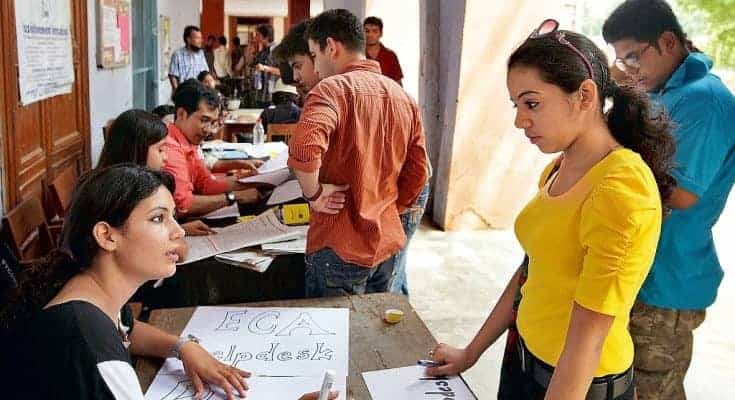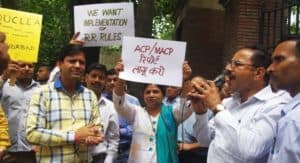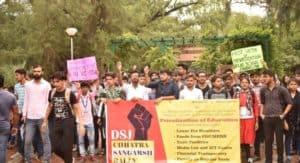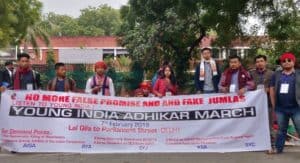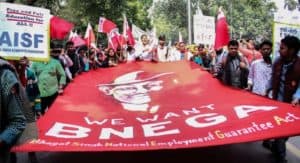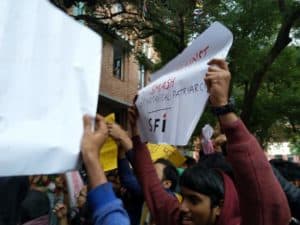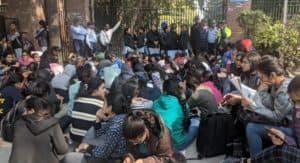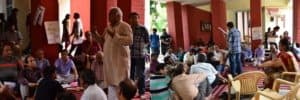Poor menstrual hygiene caused by lack of education on the issue, persisting taboos and stigma, and poor sanitation infrastructure makes menstrual health a painful experience for women.
A world which struggles in basic hygiene and sanitation facilities for women during their periods makes the simple biological phenomenon of menstruation complicated. The nexus of stigma, silence, shame and the notions of impurity associated with it makes the world a difficult place to live in.
However, looking the world through the eyes of a woman makes the whole world different than the what it exists as today, and becomes a place where you need not “WHISPER” your menstrual experiences to “STAY FREE” from stigma.
Rajkumari a resident of K-block in Jahangirpuri, Delhi narrated her experience of menstruation, “I have never used sanitary pads in my life. I just use a cloth and bleed the entire day in a room specifically meant for that”.
This is the story of 82% of India’s women who still don’t have the three basic A’s- Accessibility, Availability, Affordability to safe menstrual hygiene and management. And the social stigma associated with menstruation makes any kind of tangible action on these things ineffective as the women themselves don’t feel confident in having healthy and safe periods. Hence, menstruation is a more of a social issue which is being tackled by many stakeholders like NGOs, college students and government agencies coming together for advocacy and awareness.
Especially the onus is on the University of Delhi students to bring about this silent revolution to de-stigmatize menstruation and spread awareness in their local community to promote menstrual hygiene and management. One such initiative was taken by a group of students of Cluster Innovation Centre who worked on a semester-long project on ground level in slums, government schools, children homes and with visually challenged women to promote menstrual hygiene.
A member of the team, Shambhavi Sharma said, “What is needed is a dialogue, the more open you are about the phenomenon the more natural it becomes. So when we went around the JJ colony areas, Sanskar Ashrams, All India Confederation for Blind or the Government school in Roop Nagar as part of our project, our message was clear.
To make them aware of the physiological aspects of menstruation while focusing on one aspect of menstrual hygiene management that is – hygiene promotion and awareness. The reason being that menstrual hygiene related infections are seldom talked about yet prevalent.”
The discussions around menstruation should be normalised including the active participation of the male members to promote menstrual hygiene and management.
Another team member, Kartik Krishnan added, “I believe that men should support women and girls to manage menstruation effectively in the household, community, school, and workplace. A lot of things like not being hesitant or shy in buying a pad for a female friend, family member etc. makes the discussion more gender neutral. Therefore, young boys need to be taught to be more mature towards MHM (Menstrual Hygiene Management).”
However, this is not the complete picture of the scenario. While more than 80% of the female population still struggles for basic menstrual hygiene facilities, it is the irony of the situation that the 18% of the privileged female population who have access to safe menstrual hygiene contribute to 80% of the non-biodegradable menstrual waste. Sustainable menstruation methods are essential for the environment and are more economically cheaper than the prolonged use of sanitary napkins contributing to increased plastic generation.
Arundhati Subhedar, a student of Lady Shri Ram College, took up the initiative to spread awareness on sustainable methods for menstruation through her initiative- BLOOD. “I have been trying to promote eco-friendly periods. Sanitary napkins and tampons are a huge hassle for the environment.
Alternatives for these are menstrual cups and cloth pads, both of which are reusable, comparatively cheaper and healthier for a person” said Arundhati.
Educated and well-informed women of India need to make smarter choices keeping these things in mind.
Therefore, the biological phenomenon of menstruation incorporates several social, economic and environmental factors with it. Modern and scientific methods have to be adopted and their accessibility should be ensured as it is the basic right of every woman.
Today, on the menstrual hygiene management day let us take it upon ourselves to spread awareness on safe menstrual hygiene and management in our own community and help every woman to have a HAPPY PERIOD in its true essence.
Feature Image Credits: medium
Sriya Rane
[email protected]

